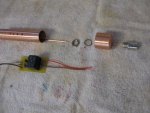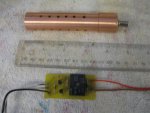62cruiserinc
Petty Officer 1st Class
- Joined
- Oct 30, 2009
- Messages
- 295
I have a 19811 Sea Ray 26' Sundancer.
The bilge normally gets little water into it. There is a bilge pump now with a float switch that came with the boat when I bought it a few years ago.
I want to add a high-capacity backup pump in case the original fails or something big happens to let more water into the bilge (bellows leak?).
The backup would be installed so it doesn't come on unless the original failed and the water level goes above the normal trigger level.
I am looking at the Johnson heavy-duty 2200 GPH pump and the Johnson solid-state switch that doesn't have a float.
Since this would rarely come on (I hope!), it would lay dormant for long periods of time, so I would activate it every so often so things don't go bad from sitting too long.
Any comments on my plan?
Steve
The bilge normally gets little water into it. There is a bilge pump now with a float switch that came with the boat when I bought it a few years ago.
I want to add a high-capacity backup pump in case the original fails or something big happens to let more water into the bilge (bellows leak?).
The backup would be installed so it doesn't come on unless the original failed and the water level goes above the normal trigger level.
I am looking at the Johnson heavy-duty 2200 GPH pump and the Johnson solid-state switch that doesn't have a float.
Since this would rarely come on (I hope!), it would lay dormant for long periods of time, so I would activate it every so often so things don't go bad from sitting too long.
Any comments on my plan?
Steve























